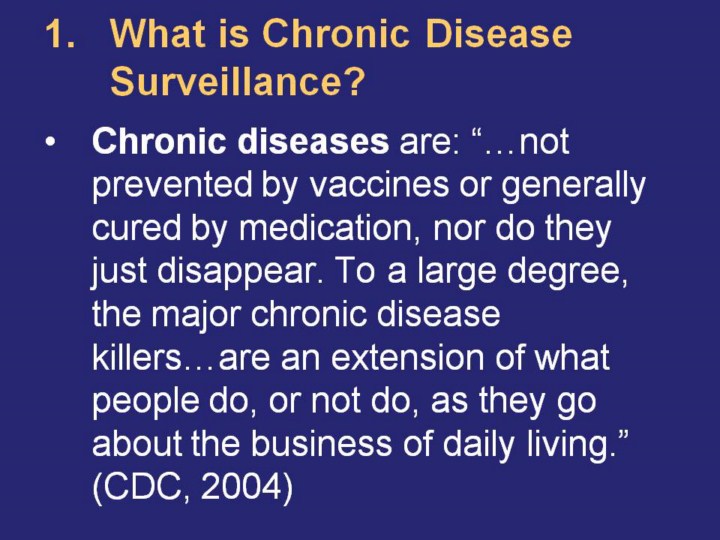| front |1 |2 |3 |4 |5 |6 |7 |8 |9 |10 |11 |12 |13 |14 |15 |16 |17 |18 |19 |20 |21 |22 |23 |24 |25 |review |
 |
Chronic diseases include heart disease, cancer, stroke, chronic obstructive pulmonary disease, and diabetes. Chronic diseases represent a considerable burden to a country’s health care system, and are often the leading causes of illness and death. The World Health Organization (WHO) estimates that in 2005, of the 58 million deaths worldwide, 35 million (or 60%) were attributable to chronic diseases (WHO, 2006). This proportion is slightly lower than the proportion reported by the Centres for Disease Control (CDC) in the United States. The CDC estimated that chronic diseases are responsible for 1.7 million deaths in the United States annually (CDC, 2004), or roughly, 7 in 10 deaths. In 2004, 70% of the United States’ $1 trillion budget on health care was spent on management and treatment of chronic diseases (CDC, 2004). In Canada, an estimated 60% of Canadians over the age of 12 have at least one chronic disease (Schultz & Kopec, 2003), and the annual cost of caring for individuals with chronic disease is estimated to be $80 billion (Chronic Disease Prevention Alliance of Canada, 2006).
|